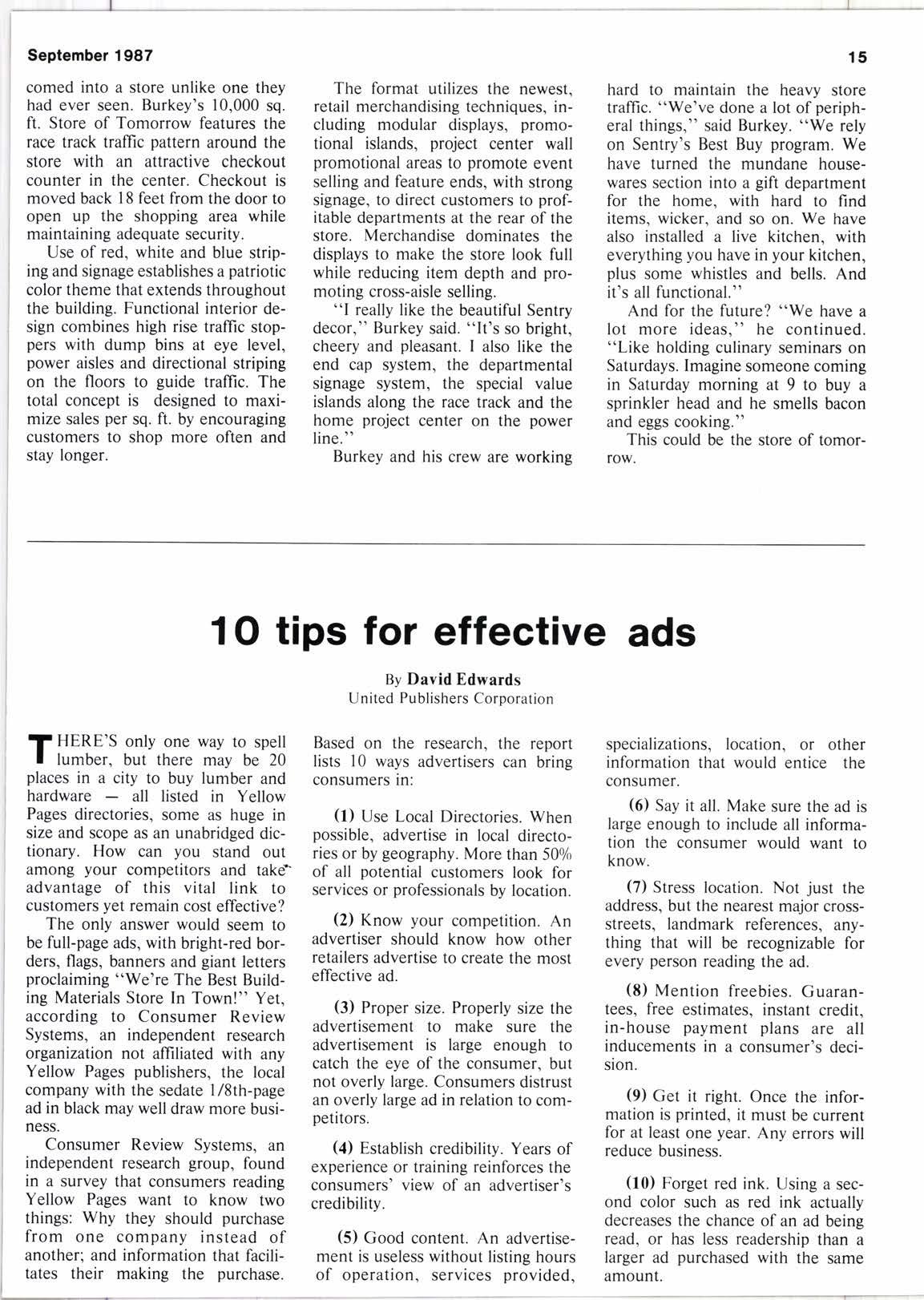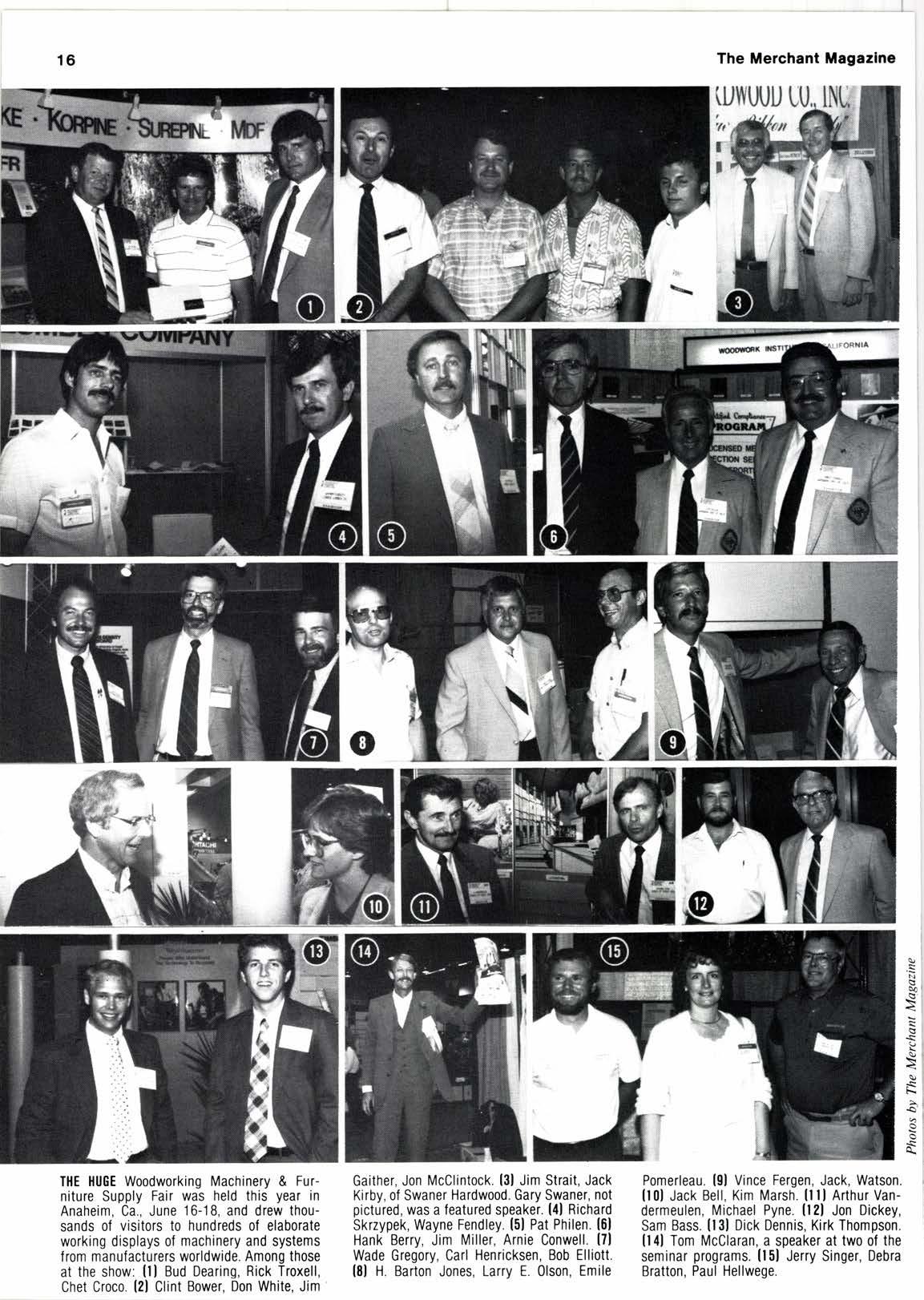
1 minute read
1O tips for effective ads
By David Edwards United Publishers Corporation
1' HERE'S only one way to spell I lumber, but there may be 20 places in a city to buy lumber and hardwareall listed in Yellow Pages directories, some as huge in size and scope as an unabridged dictionary. How can you stand out among your competitors and take* advantage of this vital link to customers yet remain cost effective?
The only answer would seem to be full-page ads, with bright-red borders, flags, banners and giant letters proclaiming "We're The Best Building Materials Store In Town!" Yet, according to Consumer Review Systems, an independent research organization not affiliated with any Yellow Pages publishers, the local company with the sedate l/8th-page ad in black may well draw more business.
Consumer Review Systems, an independent research group, found in a survey that consumers reading Yellow Pages want to know two things: Why they should purchase from one company instead of another; and information that facilitates their making the purchase.
Based on the research, the report lists l0 ways advertisers can bring consumers in:
(1) Use Local Directories. When possible, advertise in local directories or by geography. More than 500/o of all potential customers look for services or professionals by location.
(2) Know your competition. An advertiser should know how other retailers advertise to create the most effective ad.
(3) Proper size. Properly size the advertisement to make sure the advertisement is large enough to catch the eye of the consumer, but not overly large. Consumers distrust an overly large ad in relation to competitors.
(4) Establistr credibility. Years of experience or training reinforces the consumers' view of an advertiser's credibility.
(5) Good content. An advertisement is useless without listing hours of operation, services provided, specializations, location, or other information that would entice the consumer.
(6) Say it all. Make sure the ad is large enough to include all information the consumer would want to know.
(7) Stress location. Not just the address, but the nearest major crossstreets, landmark references, anything that will be recognizable for every person reading the ad.
(8) Mention freebies. Guarantees, free estimates, instant credit, in-house payment plans are all inducements in a consumer's decision.
(9) Get it right. Once the information is printed, it must be current for at least one year. Any errors will reduce business.
(10) Forget red ink. Using a second color such as red ink actually decreases the chance of an ad being read, or has less readership than a larger ad purchased with the same amount.











